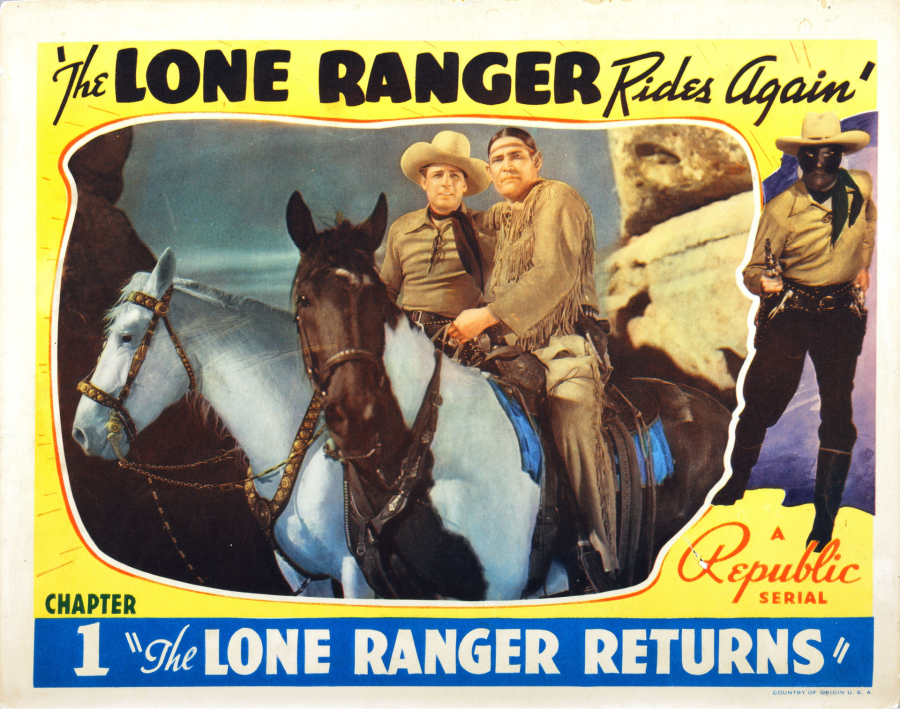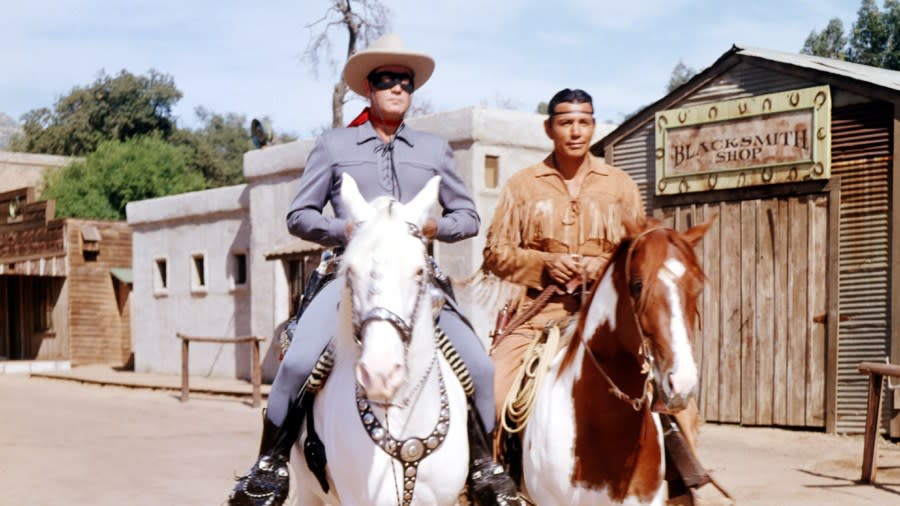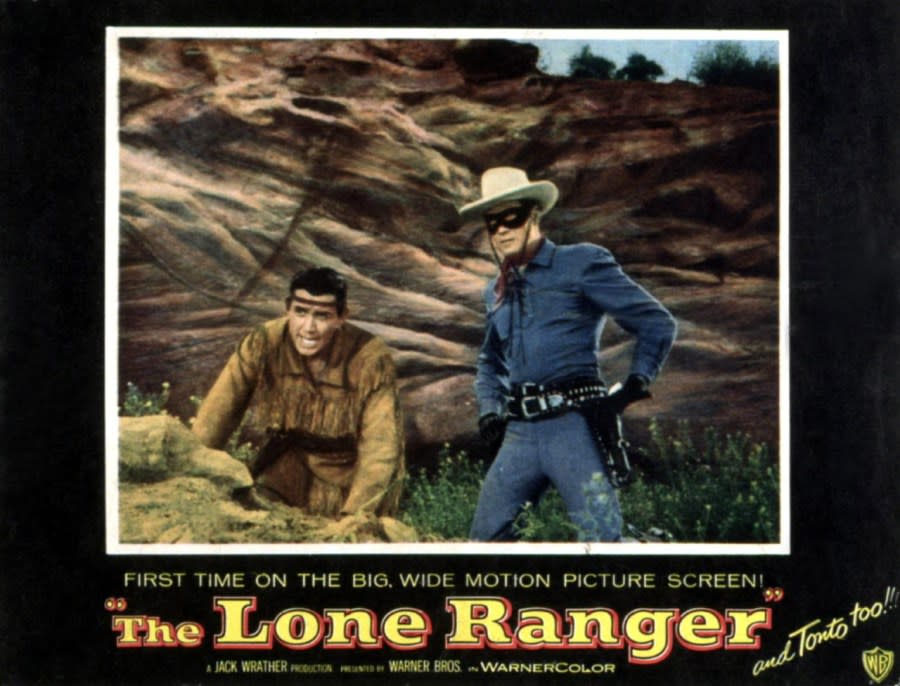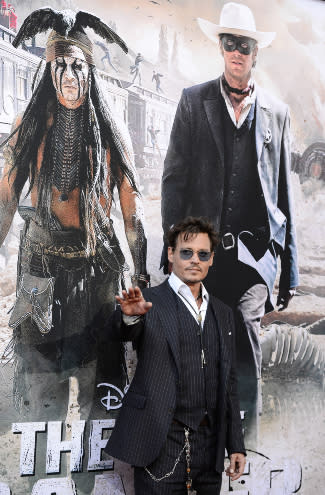The western roots of ‘The Lone Ranger’ tied to Michigan
GRAND RAPIDS, Mich. (WOOD) — Westerns were once one of Hollywood’s most popular genres. And while the cowboy motif draws from a lot of southwest culture, it also has roots in Michigan.
This week will mark 90 years since the radio debut of “The Lone Ranger” — a show developed and produced by the team at Detroit’s WXYZ-AM.
The program’s first broadcast was aired on January 30, 1933, on WXYZ and its Michigan Regional Network, including WOOD Radio in Grand Rapids and WKZO in Kalamazoo. But the story starts years before, when WXYZ station management decided to drop its partnership with the Columbia Broadcast System — now known as CBS — and focus on developing its own content.
THE WILD WEST OF RADIO
George W. Trendle was the man at the top at WXYZ. The former lawyer had bought the radio station in 1929 along with his business partner, John Kunsky, and immersed himself in the broadcasting world, taking over as the station manager.
Trendle was considered an extremely frugal man — something that didn’t always play well with his employees but was also a likely factor in the station’s survival during the Great Depression. While not directly noted, it may have been one of the reasons WXYZ dropped its affiliation with CBS in 1932 and concentrated on producing its own content.
WWJ: How Michigan’s pioneer radio station led the way
In a pre-television and pre-internet era, the radio waves dominated the entertainment industry. Radio stations weren’t limited to the music, sports and talk programs that we see now: They also routinely produced their own entertainment programs — soap operas, sitcoms, crime dramas and more.
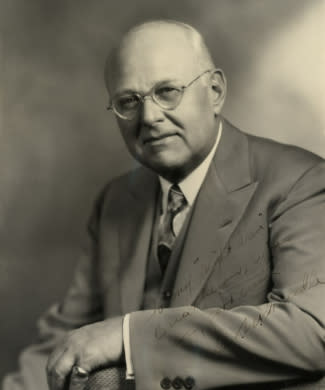
After the station’s first offerings, “Thrills of the Secret Service,” “Dr. Fang,” and “Warner Lester, Manhunter” missed the mark, Trendle decided to make a move that paid off in spades. He hired James Jewell to direct WXYZ’s drama department and hired Fran Striker to lead the station’s script department.
The three men are considered the team that developed the concept behind “The Lone Ranger,” though Jewell, among many others, felt they were never given the proper credit for creating the show.
The show quickly proved to be a hit. Within a year, WXYZ had partnered with other giant stations, WOR in New York City, WLW in Cincinnati and WGN in Chicago, to create a network of their own called the Mutual Broadcasting System. In 1935, Trendle uprooted the station again and signed on with NBC — a move that ultimately cost the station its flagship show.
Contractually, WXYZ was obligated to produce “The Lone Ranger” for the Mutual Broadcasting System for another seven years, so the station produced the program but it was broadcast in Detroit on rival station CKLW out of Windsor, Ontario.
THE LONG HISTORY OF ‘THE LONE RANGER’
The origin of “The Lone Ranger” is a tried-and-true template for the Western. John Reid, the title character, was the lone survivor of a group of Texas Rangers who were ambushed by outlaws. A Native American named Tonto found Reid and nursed him back to health. Together, the two roamed the west to establish justice and ward off the bad guys.
Reid was a white knight in every sense of the word. According to a profile by Hour Detroit Magazine, Trendle laid out strict rules for the Lone Ranger’s personality.
“He was to speak in perfect English, could never cuss, drink alcohol, or tell a lie, and he had to be respectful of all nationalities and religions,” the piece stated. “In this theater of the mind, listeners were to see a level-headed pursuer of justice, not some vigilante wildly blasting his trademark silver bullets off saloon ceilings and canyon walls.”
Happy birthday to a Michigan Legend: James Earl Jones
While John Todd played Tonto through the radio show’s entire run, several men voiced the Lone Ranger. A little-known actor named Jack Deeds was the first person to don the mask. He lasted only six episodes, not only for playing the role “in unconvincing fashion” but also for showing up to the station drunk. He was fired on the spot and Jewell took over the role for that night’s broadcast.
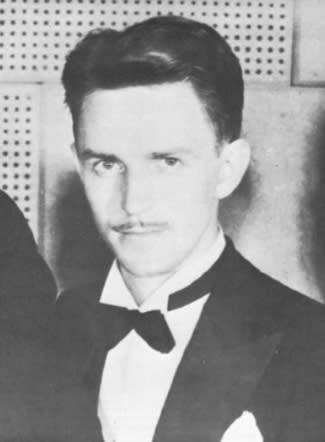
George Stenius then briefly took over the role before leaving Detroit for Hollywood. He found success there working under the name George Seaton. He won two Oscars and was the writer and director of “The Country Girl” and “Miracle on 34th Street.”
On April 9, 1933, Earle Graser had slid into the role, showcasing a booming voice that portrayed a strong, fearless character. He held the role for eight years, performing three nights a week, three times a night to cover different time zones.
To keep the Ranger’s character pure, Trendle chose to keep the actor’s name a secret and instructed his staff to keep it in house, as well. Hour Detroit Magazine said few people in Graser’s neighborhood in Farmington actually knew he was a radio star.
Graser’s voice was so identifiable, and had reached such a broad audience, that it came as a major shock when he died in a car crash on April 8, 1941. While never outright declared, the Waterloo Region Record in Graser’s hometown of Kitchener, Ontario, claimed that Graser fell asleep behind the wheel after leaving the WXYZ studios, exhausted following his night of performances.
Graser, whose voice brought the Lone Ranger to life, may have provided the sound of the character, but he didn’t look the part. He was short man who “had never rode a horse or shot a pistol.” Brace Beemer, however, fit the bill.
Beemer could match Graser’s demeanor, knew how to handle a gun and a bullwhip, and did so with a tall and athletic physique — enough so that he was brought on to make promotional appearances dressed up as Reid, mask and all, alongside his beautiful white steed.
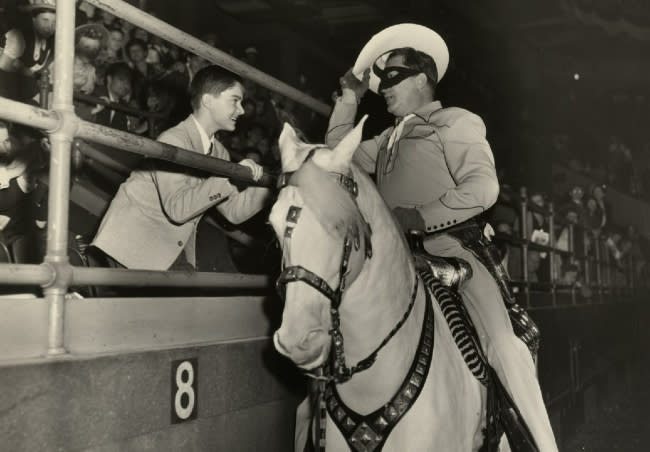
After Graser’s death, producers decided to let Beemer step in and take on the full facet of the role.
“With a schedule of live broadcasts looming, the tragedy had station officials scrambling to rewrite scripts while searching for a replacement,” Richard Bak wrote in 2007. “Several candidates were considered, including a staff announcer who recently graduated from the University of Michigan — Myron ‘Mike’ Wallace of future ’60 Minutes’ fame. In the end, Beemer, who by now was the station manager and the longtime public face of the Ranger at parades, rodeos and school functions, was the logical choice.”
According to Bak, the storyline was tweaked to help the audience grow accustomed to the Ranger’s new voice. The Ranger had been seriously wounded and for several episodes could hardly talk other than the occasional whisper or moan. Todd’s Tonto carried much of the action for a couple of weeks until the Ranger had healed, and Beemer unleashed his own bold, fierce tone.
A NATIONAL TREASURE
“The Lone Ranger” was a national hit, at least for Trendle. According to Bak, Striker, who had taken a full-time job to help write the show for $100 a week, was forced to surrender all rights to the character. That allowed Trendle to cash in as Lone Ranger merchandise flew off the shelves.
“He quickly copyrighted ‘The Lone Ranger’ and raked in millions of dollars over the life of the show. To discourage employees looking for a raise, he kept a doctored ledger showing the profitable program losing money,” Bak wrote.
Trendle also wasn’t worried about oversaturating the market or about letting his prized show out of his hands. He allowed Republic Pictures to produce and release two films, “The Lone Ranger” and “The Lone Ranger Rides Again” in 1938 and 1939.
A 1939 advertising poster for “The Lone Ranger Rides Again” featuring Robert Livingston and Chief Thundercloud. (Getty Images) A 1950 file photo showing Clayton Moore and Jay Silverheels on their horses “Silver” and “Scout” in the television series “The Lone Ranger.” (Getty Images) A 1956 poster of “The Lone Ranger” featuring Jay Silverheels and Clayton Moore as Tonto and John Reid. (Getty Images) Johnny Depp poses in front of a giant movie poster of Disney’s “The Lone Ranger” in 2013. Depp portrayed the Native American warrior Tonto. (AP file)
He also allowed ABC to develop a Lone Ranger TV show that aired for eight seasons, from 1949 through 1957, along with two spinoff feature films “The Lone Ranger” and “The Lone Ranger and the Lost City of Gold.”
And though the radio show wrapped up in 1954, reruns ran in syndication for years after that, not to mention book series, comic books and even a newspaper comic strip.
Sign up for the News 8 weekly recap newsletter
In later years, “The Lone Ranger” was adapted into a children’s cartoon, including a run from 1980 through 1982 on CBS’ “Adventure Hour” — nearly 50 years after the show made its radio debut.
The latest revival of the show was Disney’s 2013 film adaptation starring Armie Hammer and Johnny Depp as Reid and Tonto. Still, there are plenty that prefer the golden era of radio. Paul Carnegie, a longtime radio DJ who used to work on the show, told Bak that other adaptations never captured the magic of the original.
“The show has all the right elements. There were great sound effects and a wide variety of voices, so you could identify the characters,” Carnegie said. “There was fine acting, good writing, and a little bit of mystery. And good triumphed over evil. Always.”
For the latest news, weather, sports, and streaming video, head to WOODTV.com.
